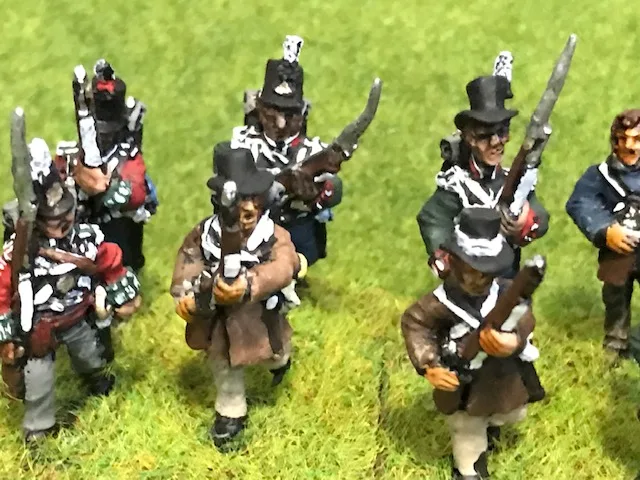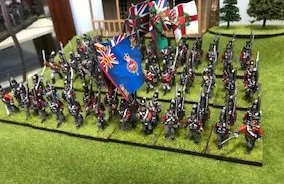At club game night I was planning on putting on a Crimean War 1854 game. I was wondering about the blogs looking at what other people have done for scenarios. I was looking for ideas and suggestions. I found just what I had been looking for on the blog "1866 and All That. " His Crimean game was a fun read and great battle report and I knew right away I could adapt it to my armies and table. For my game I have retained the terrain and objectives but scaled down the regiments. If you are interested in the original battle please visit it here:
http://stracmark.blogspot.com/2016/08/crimean-war-game.htmlhave
Thank you Mark for putting g on such a fun and exciting game and for allowing me to borrow your idea!
Rules for the game are "Charge of The Light Brigade " by Davis Raybin. All figures are 25mm.
Initial deployments were:
• Russians – within the yellow box
• French - within the red box
• British – within the blue box
The scenario was set quite soon after the battle of the Alma, while the Allied forces were setting up their bases on the southern shores of the peninsula and establishing siege lines in front of Sevastopol. In an attempt to drive the Allies back on their bases, or at least to delay the establishment of siege lines until more Russian forces could arrive, the Russian commander attacked across MacKenzie Heights.
The Russians easily secured their primary objective, the MacKenzie farm that covered the heights, but success of the operation could only really be assured by the occupation of the hill south of the farm that dominates the road between the British and French bases. So victory conditions for the Russians were set as:
• Major victory – hold the hill with the road at the end of the game.
• Minor victory – hold the farm at the end of the game
• Defeat –The farm is taken by the allies, regardless of any other objectives taken
Russian Army
16th Division (Kvetinski)
1st Brigade
Vladimirski Regt. (4 battalions)
Susdalski Regt. (4 battalions)
2nd Brigade
Uglitski Regt. (4 battalions)
Kazanski Regt. (4 battalions)
16th Artillery brigade (4 guns)
Cavalry Brigade:
Kievski Hussar Regt.
Ingermanlandski Regt.
Cossacks Regt.
The allied forces desperately needed to contain the Russians. The French and British commanders understand of the importance road and their primary objective is to secure it. Acting without communication of the each of them have scrambled together a force and despatched them to area. Their victory conditions are:
• Major Victory – compel the Russian force off the table to the north
• Victory – secure the road – Russians control the road if at the end of the game they have six or more unshaken units that occupy the road or can bring it under fire.
• Defeat – any result not shown above.
British Light Division (General Brown)
1st Brigade (Codrington)
7th Royal Fusiliers
23rd Royal Welch Fusiliers
33rd Duke of Wellington 's
2nd Brigade (Butler)
19th Yorkshire Regt.
77th Middlesex Regt.
88th Connaught Rangers
Royal Artillery
Heavy Cavalry Brigade (Scarlett)
Royal Horse Artillery
French Army
1st Brigade (Espinasse)
1st Zouaves Regt. (2 battalions)
7th Ligne (2battalions)
20th Ligne (2 battalions)
Artillery battery
1st Chasseurs d's Afrique





































